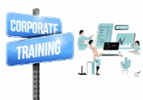SAP-FICO

| Start Date | Class Timing | Duration | Mode of Training | Trainer Profile |
|---|---|---|---|---|
| 26-Apr | 9am to 2pm, every Sunday | 8 Weeks | Onsite |
- Why Choose getitcore
- Online Training Features
- Who can do this course
- What does it covers
- After course completion
- Job Opportunities
- Certification Exam
- Course Content
- Real-Time Expert Trainers (more than 10 years experience in particular
- technology)
- Flexible timings
- Do not worry about your timings because we are always with your timings.
- Industry Specific Scenarios
- Students are provided with all the Real-Time and Relevant Scenarios. With Real time workshops
- live online Training courses
- Industry Specific Scenarios
- Video Recording Sessions
- Soft Copy of Materials
- Resume Preparation for interviews
- Interview Preparation Tips
- 100 %Free job assistance
Why Choose getitcore
getitcore ONLINE TRAINING FEATURES
- Real-Time Expert Trainers
- Live online Training courses
- Real-Time Expert Trainers
- Industry Specific Scenarios
- Video Recording Sessions
- Soft Copy of Materials
- Resume Preparion for interviews
- Interview Preparation Tips interviews
- 100 %Free job assistance
Online Training Features
We believe to provide our students the Best interactive experience as part of their learning
Flexible timings
Do not worry about your timings because we are always with your timings.
Industry Specific Scenarios
Students are provided with all the Real-Time and Relevant Scenarios. With Real time workshops
Who can do this course
This course is also suitable for graduation of (UG and PG) university and as well as who is having passion in system knowledge, Business and would like to enter this course.
Keywords: AWS training, CCNA training, DEVOPS training, Linux training, Kali Linux training, Ethical Hacking training, Phython training, Soft Skills training, getitcore AWS training, getitcore CCNA training, getitcore DEVOPS training, getitcore Ethical Hacking training, getitcore Linux training, getitcore Kali Linux training, getitcore Phython training, getitcore Soft Skills training
What does it covers
After course completion
- Explain and use the basic functions of technology
- Make the necessary settings for consumption-based planning
- Utilize procurement optimization techniques
- Release procedures
- Process invoices and manage discrepancies
- Enter goods movements in the system and make the relevant settings for special function.
Job Opportunities
- (After passing the certification exam)
- Business Process Owner
- Team Lead
- Power User and End User
Certification Exam
- This course will lead you towards the following certification
- Associate Level
- 80 questions for the exam
- 3 Hours duration
- Passing Score is 80%
Course Content
- What is FI/CO
- Sub modules in FI & CO
- Introduction to G/L (New G/L),AP,AR,AA
- Introduction to CEA,CCA,EC-PCA,CO-PA and PC
- Introduction to Banking and Treasury
- Concepts of Integration with MM and SD
- Introduction to Month end Closing and Year and Closing
- Company and Company Code
- Business Area and Credit Control Area
- Fiscal Year Variant-Types of Fiscal Years
- Chart of Accounts-Type of COA
- Posting period Variant
- Open and Closing Posting Periods
- Document Types
- Field Status Variants & Groups
- Multiple Currencies
- Introduction to Multiple Ledgers
- Other Aspects of Global Parameter G/L & New
- Preparation and Finalization of COA in Real Time
- Account Groups
- Retained Earnings and importance of Retained Earnings
- Tolerance Groups for General ledger/Employees
- Screen Variants for G/L Postings
- Exchange Rate Maintenance
- G/L automatic Clearing Maintenance
- Foreign Currency Valuation and Translation
- Financial statement Version
- G/L integration with MM and SD
- Define and Activate New G/L
- Activation and specification of Additional Ledgers
- Define Currency for Additional Ledgers
- Define Segment
- Define Document Splitting for G/L accounting
- Activate Document Splitting
- Define Document type for Entry View
- Transfer Balances and Carry Forward (Balance Sheet & P&L Items)
- Posting Keys
- Documents in G/L-Park & Post, Hold, Recurring, Account Assignment Model etc.,
- G/L Reports
- Account Groups
- Document Types for Customers and Vendors
- Number Range assignment for Account groups
- Customer and Vendor Master Data
- Reconciliation Accounts for customer and vendor Master Data
- Terms of Payments
- Payment Methods
- Automatic Payment Program
- Dunning
- Down Payments, Bills of Exchange and Guarantees
- Tax Calculation Procedure
- Taxes-VAT and Withholding Taxes
- Automatic determination of G/L accounts for Taxes, Foreign Exchange (Realized and unrealized Accounts)
- House Banks
- Manual & Electronic Bank Statement
- Check and Transfer method of payments through Banks
- Check Register, Check Maintenance, Issuance, cancellation Etc.
- Customer and Vendor Reports
- Z reports and preparation of Functional specs for Z reports
- Chart of Depreciation
- Define 0% tax Codes for Asset Accounting
- Asset Class and Account determination of Asset Classes
- Depreciation Areas (Derived Depreciation Areas)
- Screen Layout Rules and Number range Assignments
- Depreciation Areas for Parallel Currencies
- Group Assets
- Depreciation Keys
- Asset Master data (Main and Sub Assets)
- Overview of Revolution of Assets
- Introduction to inflation Accounting
- Asset Acquisition (Direct and AUC)
- Asset retirement (Scrapping, with Revenue with Customer and without Customer)
- Inter and Intra Asset transfer
- Asset Reports/With Different variants and Asset explorer
- Strategy on data Migration related to Asset (Legacy Assets-upload Process)
- FI-MM Integration (Configuration from MM to attain PO,GR and IR
- Account Assignment Categories in PO and business process to be used with different Account Assignment categories
- Valuation Area, Valuation class and its importance in Material Master
- Accounting aspects from Material Master
- Material Movements Types
- OBYC and G/L account assignment from MM process
- FI-SD Automatic Accounts determination
- Revenue Reorganization process in FI and SD Integration
- Define Controlling Area
- Assignment of Controlling area to Company Codes
- Importance of Different Fields in controlling Area
- Primary cost and secondary cost elements
- Activity Type
- Statistical Key Figures
- Reposting, Distribution and Assessment
- Activity type categories
- Planning and Budgeting of Cost Elements
- Cost Element categories
- Cost Element groups
- Cost Element Reports
- Cost Center Hierarchy
- Cost center Groups
- Cost Center Categories
- Define Planner Profile, Versions for Planner Profile
- Cost Center Reports
- Define Operating Concern
- Define Characteristics and value fields
- Define profitability Segment Characteristics
- Define Characteristics Hierarchy and Derivation
- Maintenance and Assignment of value fields
- Transfer of Billing Document to COPA
- Automatic Account Assignment
- Maintain PA Transfer structure for Direct FI Postings
- Information System in COPA
- Order Management in Controlling Area
- Define and Assign number ranges to Order Groups
- Types of Order
- Model Order
- AUC (Assets) process with Internal Order (Real)
- Investment Management Integration with Internal Orders
- Month end and final settlements of Internal Orders
- Information System (Reports) for Internal Orders
- Maintain Profit Center and Activation of company code in profit center
- Control Parameters for Actual data
- Plan Versions
- Profit Center Standard Hierarchy
- Profit Center Groups
- Transfer Pricing process with profit center
- Maintain planner profiles
- Distribution & Assessment
- Automatic Account Assignment for Revenue Elements
- Reports in profit center Accounting
- Define and Activate Material Ledger
- Assign Currency type to Material Ledger
- Dynamic Price Change in ML
- Other Aspects of ML
- Material Costing
- Maintain Overhead cost Elements
- Define Cost Sheets
- Define Overhead Keys and Groups
- Define Cost Component Structure
- Product Costing by Order
- Variance Calculation
- Work In Progress
- Settlement
- Product Cost by Period
- Variance Calculation
- Work In Progress
- Settlement
- Product Cost by Sales
- Result Analysis
- Settlement
- Uploading the Data(LSMW) to ERP Server
- Overview of ERP Methodology
- Creation of Financial Statement Version
- Transport Request Creation and Release
- ERP Query
- Month End, Year End Closing Activities
- Carry Forward Balances to next Year
- FAQS
- Tickets
- Explanation on AERP Methodology
- Demo on Live Systems
- ERP R/3 System Landscape Model – Transport Strategy
- Project Implementation through ERP Solution Manager
- End-to-End Implementation Project on real time business objects in phase sequence as shown below.
- Project Preparation
- Business Blue Print
- Realization
- Final Preparation
- Go-Live
- Ellaborating the role of Consultants in different stages of project including documentation, presentations to be done by them
- Project Environment & roles n responsibilities in other types of projects
- Support/ Maintenance
- Roll-out/ Template
- Upgradation
- Overview on Interaction with clients & team in On-site/ Off-Shore Model
- Liaison between Offshore and Onsite
- Mock Interview by real-time faculty
- Feedback form for each consultant on Technical & project concepts
- 100% Job assistance.
FINANCIAL ACCOUNTING AND CONTROLLING
ERP FICO Course Syllabus
Introduction to ERP & ERP
Introduction to FI/CO
Global Parameters
G/L Concepts
A/R & A/P, Banking
Asset Accounting
Integration
Controlling & Cost Element Accounting
Cost Center Accounting
CO-PA
Internal Orders
Profit Center Accounting
Product Costing and Material Ledger
Real Time Concepts
Level – II Programme: Project on Real Time Scenarios









